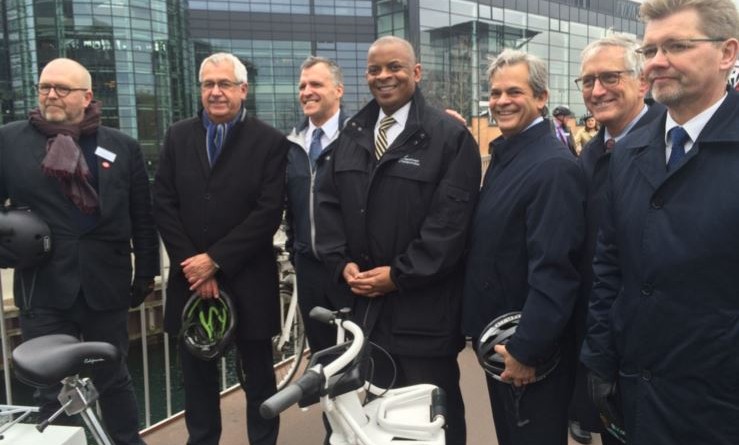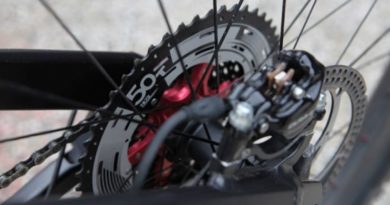US Transport Secretary taking active travel lessons from northern European territories
Anthony Foxx, the United States’ Secretary of Transportation, recently took to the streets of Copenhagen alongside the Danish Cycling Embassy in bid to learn about active travel friendly cities.
It’s the first in three visits, taking in Denmark, the Netherlands and Norway, with a view to learning a little from each on designing in safe and inspiring cycle route layout.
In a blog post on Transportation.gov, Foxx recognises the need for a culture change in the US, pointing to increasing population and growing levels of freight transportation as two factors driving the need for change in cities.
“This increase will include a drastic population shift from rural to urban areas and we’re already preparing our transportation system to adapt and expand. We have a sense for the challenges and opportunities this presents here at home, so we’re taking our ideas and solutions overseas for an international innovation exchange. Beginning today, I will be participating in roundtables, presentations and panels that highlight transportation’s role in improving quality of life, economic development, and the environment. Denmark, the Netherlands and Norway are leaders in such innovation, particularly when it comes to creating bicycle and pedestrian infrastructure and developing Smart Cities through technological innovation, so we will visit all three countries.”
Foxx is not alone in his travels, in fact Mayors of Austin, TX, Portland, OR and Buttigieg of South Bend, IN are tagging along with a view to developing their region’s active travel merits. All three are part of the Department of Transportation’s “Mayor’s challenge for safer people, safer streets.”
On their visit to Copenhagen, the political figures met with Klaus Bondam, the CEO of the Danish Cyclists’ Federation.
Bondam said of the experience on the Cycling-embassy.dk blog: “In the US the average car trip is 5 kilometres long – the same as in Denmark – and there is a huge potential for supporting cycling in American cities. As such we are quite happy that the highest levels of US administration wishes to see how it is done in Denmark. We are about to see both the Bicycle Snake and Cirkelbroen, both examples of how to create accessibility and connectivity for Copenhagen’s cyclists in an innovative, aesthetic, and beautiful way”.
Taking to the streets on bicycles, Bondam introduced the group to what are considered to be shining examples of active travel accommodation, taking in the “Bicycle Snake” (Cykelslangen) continuing over Bryggebroen and Cirkelbroen. Prior to the ride, the American delegation also visited Gehl Architects, which has played a key part in continuing to shape Copenhagen’s cycling infrastructure.
“Through the Cycling Embassy of Denmark we experience a lot of international attention towards Danish bicycle solutions, and it is an obvious international tendency that the bicycle is increasingly viewed as the solutions to rising problems of congestion and mobility in cities. Within the embassy there is a thorough knowledge on planning and promoting bicycle culture. We are just a phone call away,” added Bondam.
Foxx said following the tour of Copenhagen: “A safer, more efficient and more effective transportation system can and will exist by harnessing technology and the power of public-private partnerships. Between the brain trust of experts at home and exchanging best practices and lessons learned abroad we are working tirelessly to make sure that no place in America, urban or rural, lacks adequate and equal access to the 21st century economy.”
People for Bikes staffer Michael Anderson has a further blog post on the delegates’ tour here.



